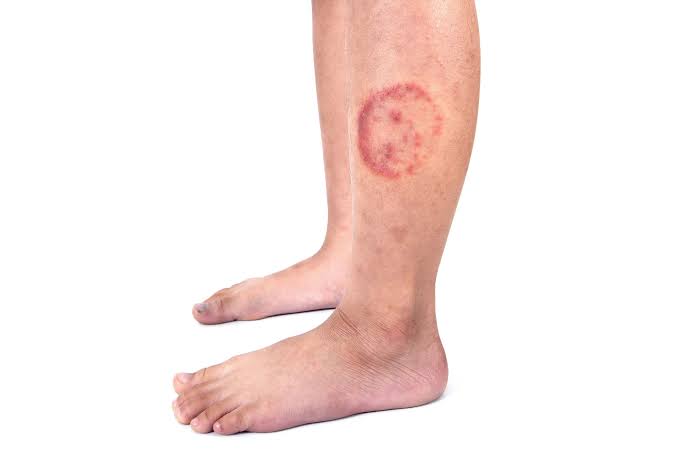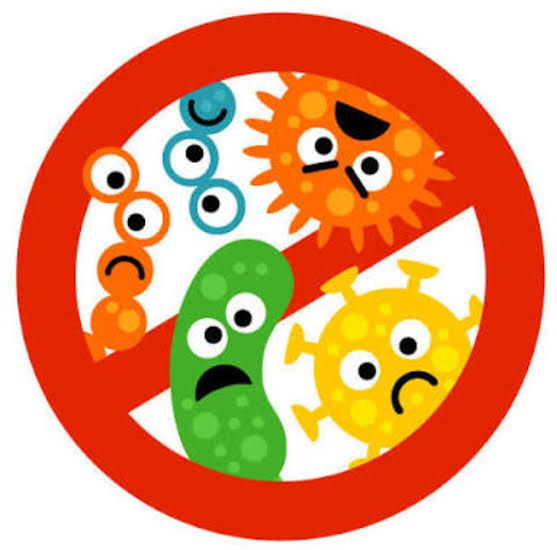Welcome to our in-depth tutorial on ringworm, a prevalent and uncomfortable skin ailment that affects millions of people globally. We will go into the definition, types, stages, causes, risk factors, signs, and symptoms of ringworm in this blog post. We will also look at how homeopathy can be a key component of ringworm treatment.
This beginner’s guide will teach you important insights on ringworm and the advantages of homeopathy, whether you are a parent worried about your child’s itchy scalp or someone suffering from this fungal ailment.

Identifying Ringworm
Ringworm is not at all caused by worms, despite its name. It is a fungal illness that affects the nails, hair, and skin. The red, circular rash that frequently occurs on the skin is what gives rise to the term “ringworm.” In addition to being extremely contagious, this fungal illness can be unpleasant and ugly.
Exploring the Varieties of Ringworm
Numerous kinds of ringworm can appear, each affecting a different part of the body:
1. Tinea Corporis: This is a type of body ringworm. It usually manifests on the skin as an irregularly shaped or circular rash that is red, scaly, and irritating.
2. Tinea Capitis: Also referred to as scalp ringworm, this condition affects the hair shafts and scalp. Hair loss and scaly, itchy areas on the scalp are possible symptoms.
3. Tinea Pedis: Also referred to as athlete’s foot, this condition primarily affects the feet. The skin on the soles of the feet and in the spaces between the toes may become itchy, burning, and peel.
4. Tinea Cruris: The groin region is affected by this notorious jock itch. It appears as an itchy, red rash in the inner thighs and groin.
5. Tinea Unguium: This variety attacks the nails, thickening, discoloring, and brittlely causing them to break off.
6. Tinea Barbae: May cause redness, pustules, and hair loss. It affects facial hair and the beard.
7. Tinea Manuum: A condition affecting the hands that can cause itchy, red, scaly patches.
8. Tinea Versicolor: Despite being a yeast infection, because of its distinctive skin pigmentation, it is sometimes confused with ringworm.
The Stages of Ringworm
Usually, ringworm advances in multiple stages:
1. Incubation Stage: This is the time frame between being exposed to a fungus and the onset of symptoms. It can take weeks for some people to have symptoms, while it can take only a few days for others.
2. Early Stage: The afflicted area may develop an uneven, round, or red rash. It frequently comes with irritation and itching.
3. Progression Stage: Untreated ringworm can deteriorate, causing the rash to spread and discomfort to worsen. Scratching the region may make the situation worse.
4. Healing Stage: The rash will begin to get better and the symptoms will go away with the right care. To avoid a recurrence, the entire course of treatment must be followed.
Uncovering the Causes of Ringworm
Numerous fungal species, such as Trichophyton, Microsporum, and Epidermophyton, are responsible for ringworm. These fungi are found to flourish in warm, humid settings. They can spread both directly and indirectly through contaminated objects or surfaces and human or animal contact.
The Risk Factors of Ringworm
Your chance of getting ringworm can be raised by the following factors:
1. Close Contact: The risk of transmission is increased when one is in close proximity to an infected person or animal, such as a pet.
2. Warm, Humid Environments: Ringworm-causing fungi prefer warm, humid environments. Those who reside in such settings are more vulnerable.
3. Bad Cleanliness: Not practicing good personal cleanliness can make you more prone to ringworm.
4. Weakened Immune System: People who are receiving chemotherapy or have HIV/AIDS are more vulnerable to fungal infections because of their compromised immune systems.
5. Sports and Activities: People who play close-contact sports or athletes who share equipment often run a higher risk.
Recognizing the Signs and Symptoms of Ringworm
Depending on the kind and location of the infection, ringworm’s signs and symptoms might change, but typical traits include:
1. Red, Circular Rash: A red, circular rash with elevated margins that frequently looks scaly is the telltale sign of ringworm.
2. Itching: The rash usually itches in the affected area, and scratching might make it worse.
3. Blisters or Pustules: Certain ringworm types, such Tinea Barbae, can result in blisters and pustules.
4. Hair Loss: Affected parts of the scalp may experience hair loss in situations of scalp ringworm.
5. Brittle Nails: Thicker, brittle, and discolored nails are possible side effects of tinea unguium.
6. Burning or Stinging feeling: A burning or stinging feeling is a common symptom of jock itch, also known as tinea cruris.
Investigating Ringworm
It is crucial to see a medical expert if you think you may have a ringworm. Usually, a diagnosis is made based on:
1. Clinical Examination: A medical professional will visually inspect the affected region to search for telltale ringworm symptoms, such as a circular rash.
2. Skin Scraping: In certain situations, your doctor could remove a small piece of skin from the afflicted area so that it can be examined under a microscope. This may aid in verifying the existence of fungi.
3. Wood’s Lamp Examination: A Wood’s lamp can detect some ringworm infections, such as Tinea Capitis, by producing ultraviolet (UV) light.
4. Cultures: To pinpoint the precise kind of fungus causing the infection in more difficult situations, a culture of the skin scraping may be generated.
Differential Diagnosis of Ringworm
Since ringworm mimics the symptoms of other skin disorders, an accurate diagnosis is crucial. The following illnesses could be misdiagnosed as ringworm:
1. Psoriasis: This skin condition can result in red, scaly spots that can resemble ringworm. On the other hand, psoriasis usually results in thicker, more silvery-looking scales.
2. Eczema: Eczema frequently causes skin that is irritated and itching. It can be distinguished from ringworm by having small blisters filled with fluid and erratic rash patterns.
3. Making Contact: When the skin reacts to an irritant or allergen, dermatitis develops. Usually, the rash only appears where the triggering material comes into contact with the skin.
4. Seborrheic Dermatitis: Usually accompanied by greasy, yellow scales, it can mimic ringworm, particularly on the scalp.
5. Pityriasis Rosea: This skin ailment is caused by a virus and has a characteristic rash. Pityriasis rosea is characterized by a more broad and recognizable rash than ringworm.
General Management of Ringworm
If you have been diagnosed with ringworm, prompt recovery and stopping its spread depend on proper therapy. What you should know is as follows:
1. Antifungal Drugs: Antifungal drugs are the mainstay of treatment for ringworm. Depending on the infection’s location and intensity, these may take the form of oral drugs, creams, or lotions. Pay close attention to what your healthcare provider tells you.
2. Good Hygiene: Maintaining proper hygiene is essential to stopping the ringworm from spreading. Every day, wash the impacted area with soap and water, then pat it dry.
3. Avoid Exchanging: To stop the spread of the infection, avoid exchanging personal goods with other people, such as combs, towels, and clothes.
4. Pet Quarantine: See a veterinarian for treatment if you think your pet has ringworm, and confine them until the condition is resolved.
5. Clean and Sanitize: Consistently clean and sanitize shared spaces and anything that might have come into touch with the illness.
6. Adhere to the Treatment Plan: Even if your symptoms go away before the recommended duration of your antifungal medicine is up, make sure you finish the entire course of treatment.
Preventing Ringworm
When it comes to ringworm, prevention is always the best course of action. The following actions will assist you in avoiding this uncomfortable situation:
1. Maintain Good Hygiene: Make sure to keep your skin clean and dry by washing your hands and body with soap and water on a regular basis.
2. Avoid Close Contact: Exercise caution if you must come into close proximity to an infected person or animal.
3. Do Not Share Personal Items: Steer clear of sharing clothing, towels, and razors.
4. Play Safe Sports: Make sure you take a shower and change into fresh clothes right away if you play contact sports.
5. Maintain Pet Health: Make sure your pets are in good health and get treatment for any suspected fungus infections if needed.
6. Keep Your Skin Dry: Since fungi love damp conditions, keeping your skin dry is a good prophylactic.
7. Educate Yourself: You can identify and treat ringworm more quickly if you are aware of the symptoms and risk factors.
Homeopathic Medicines for Ringworm
1. Tellurium: Used to treat ringworm, which causes itchy hands and feet, herpes simplex lesions, and strong stench coming from the afflicted areas.
2. Sepia Officinalis: Used to treat ringworm that exacerbates in the elbow and knee bends, particularly in the afternoon and evening.
3. Sulfur: Beneficial for ringworm, particularly in dry, warm weather. It causes burning and itching that gets worse with scratching and bathing.
4. Kali Sulphuricum: Used, particularly in hot environments, for ringworms of the scalp or beard that have a lot of scales.
5. Silicea Terra: This remedy is good for treating foot ringworm, especially if it gets worse around new moons and in moist environments.
These homeopathic remedies come in various potencies and are usually taken as little pills. The recommended dosage for each remedy varies according on the state of the patient. It is crucial to speak with a licensed homeopath to get the best treatment and dosage for your particular situation.

Conclusion: Homeopathy and Ringworm
While ringworm can be effectively treated by traditional medicine, some people look into complementary remedies like homeopathy. A holistic medical approach, homeopathy seeks to promote the body’s inherent healing powers. The selection of homeopathic medicines for ringworm is contingent upon the distinct symptoms and constitution of each patient. They are available in a number of forms, such as topical creams and oral solutions.
See a licensed homeopath who can assess your particular situation and offer tailored advice if you are thinking about trying homeopathic treatment for ringworm.
Keep in mind that ringworm is a curable ailment despite being annoying. By being aware of its causes, identifying its symptoms, and using the proper preventative and treatment techniques, you may get rid of this fungal infection and get back clear, healthy skin. Seek advice and assistance from a healthcare provider if you have any concerns regarding ringworm.
Reach out to us for a Consultation
For any queries, reach out to us at contact@homeopathic.ai
This blog is for information purposes. It’s crucial to note that while homeopathy is a centuries-old practice with many adherents worldwide, always consult a qualified homeopath or medical professional before initiating any treatment.





